Never has brewing tea made me more nervous. In fact, I now tremble and take a deep breath before I dare to make that first pour into the teapot. I take extra care with the water temperature for the first brew now. The spectre of burning my tea leaves on the first brew looms. I don’t even dare to use a thermometer to measure water temperature. “Feel it with your heart. Learn it with the palm of your hand and fingers in relation to the changing environment.” – had said a wise man, once.

I am back from a short stop-over at Makaibari, the first ever tea factory in the world, with tea plantations across seven villages. Few weeks back while we were driving the tea gardens through the serpentine slopes of Pankhabari, I wasn’t sure we were quite ready for what awaited us when we reached the factory.
The Banerjee family who owns the estate was such a delight to meet. In his office, Rajah Banerjee in his baritone voice ordered cups of ‘muscatel’ to be brought to us. Served within a few minutes were porcelain cups filled with honey coloured liquid gold, often known as the ‘Champagne of teas’. It did have musky-sweet tasting notes similar to muscatel wine.
What a perfect relaxing colour that was! Tea making is an art, as much as it is a science and they say you need to brew a tea 20 times to get it perfect. This fact is not an unknown one for me, for I have grown up in a family that treats these finer details like religion. Makaibari isn’t a unfamiliar name either. I have clear memories of when Baba would manage a sachet of Makaibari (Makaibari tea was never available in retail outlets- you needed to know ‘someone’ who can get a packet for you) and brew the tea at home with ceremonial precision.
As Rajah Banerjee started to explain to the smallest tea connoisseur of our family(Nyja), that the drink is really a magic potion, the senior most Basu in our group, did the un-thinkable! He asked for sugar.. SUGAR. Rajah Banerjee, in his usual calm charm, looked in my direction and in his resonant voice said, ” When you go home, boil him some water with sugar and make a syrup. That’s what he deserves. Not tea”. Udayan rolled his eyes in disbelief of what just happened. Needless to say, ‘insulting’ tea like this is sacrilegious in itself, but doing that in the office of the ‘king’ of teas is pure blasphemy! Unlike the uninitiated, I knew that.
That, Makaibari cannot have sugar. Unfortunate that I hadn’t coached him well in this subject. Magnanimous, as most kings are, the king showered his forgiveness and Basu was not to be arrested, was the dictum! And, almost as a token of his forgiveness, we were escorted as guests in their sprawling bungalow, up a little hill opposite the factory.
The living room is a space straight out of the sets of Tara Shankar Bandopadhyay’s ‘Jalshaghor’, complete with stuffed pursuits of hunts carried out by generations before, family portraits, carved furniture, bay windows that open out into vast gardens, and a library that makes you jealous. Add to that pretty plates that serve you pink iced pastries that melt like smooth nostalgia in your mouth. And tea from the kitchens of the Makaibari home, for which, by now you know, you don’t add sugar!
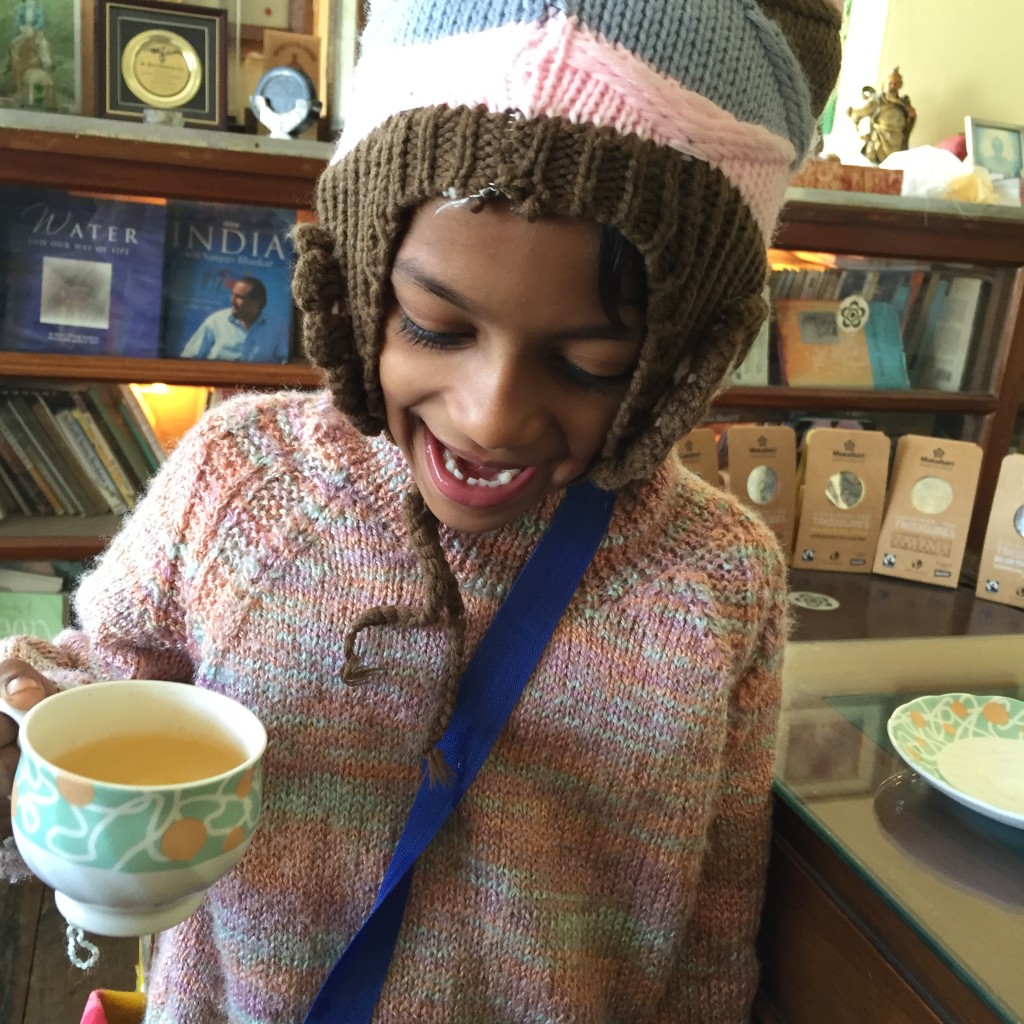
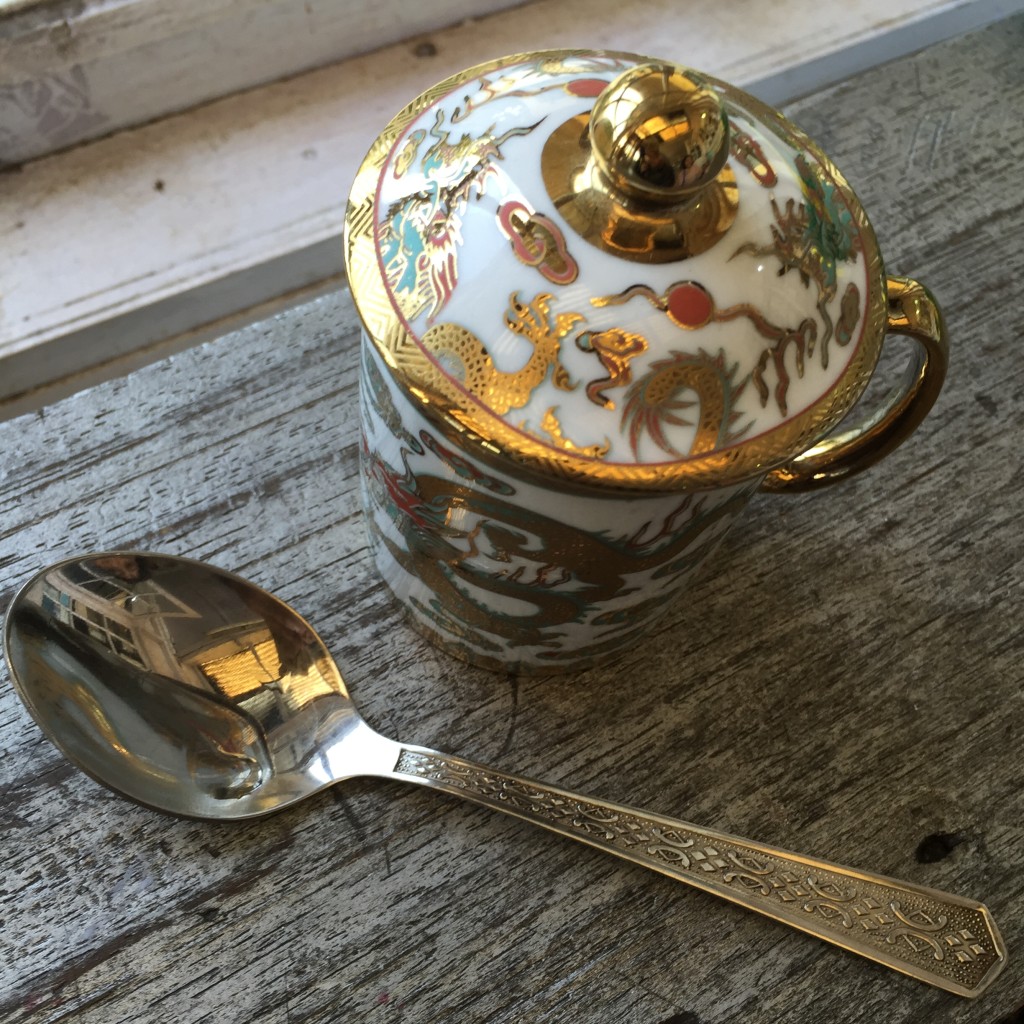
Well that explains my nervousness in making today’s cup of tea.
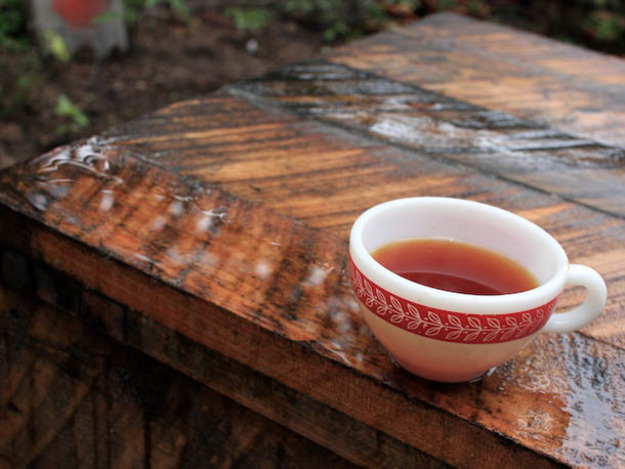
But I am also back from a trip to Darjeeling, a town that hovers along the ridge of the Himalayas with red roofs of its houses cascading down its slopes, and that explains my excitement. Every Bengali’s jia-nostal, to me Darjeeling should be famous for a lot of other things than its tea! It should stand apart for offering the most spectacular view of the Himalayas from any civilized place. For a whole range of powder white that goes on and on across the horizon, there can be nothing to compare with the view of the Kanchendzonga and its mighty cohorts which rise and fall in glistening pinnacles.
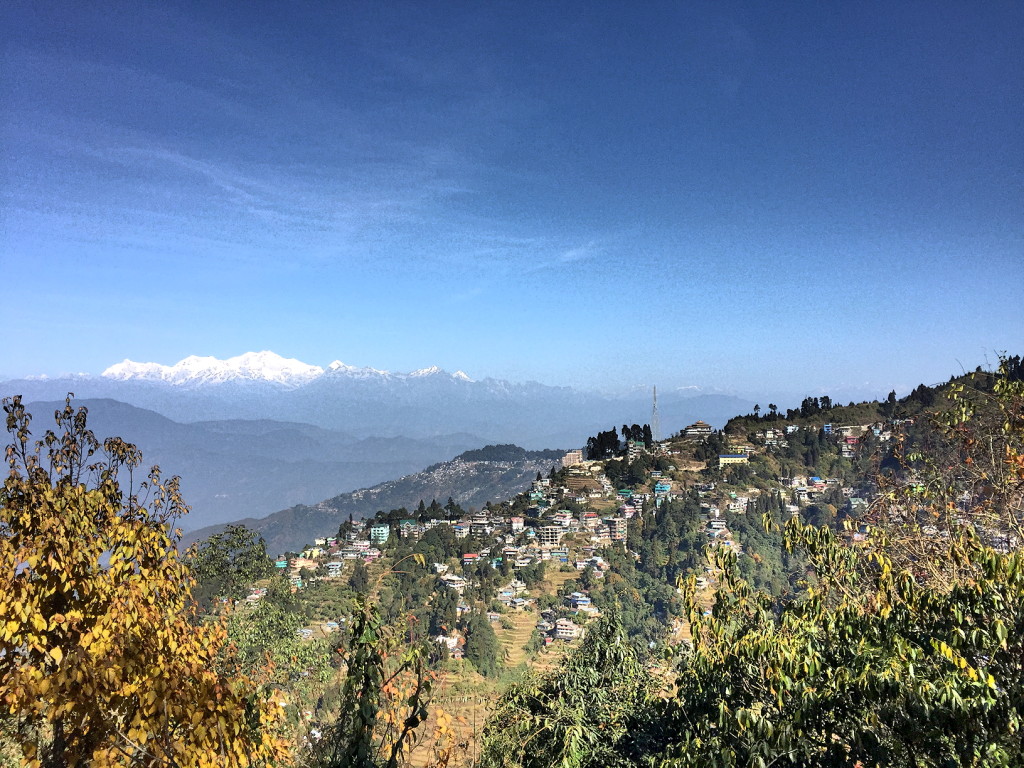
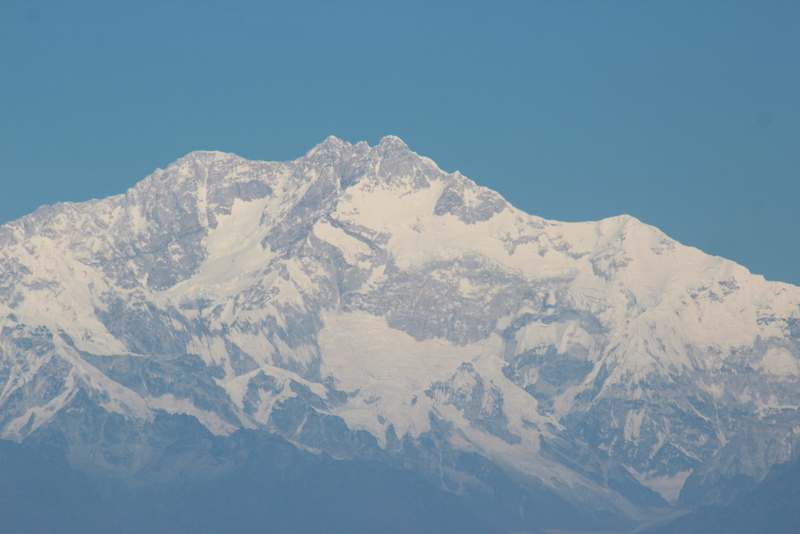

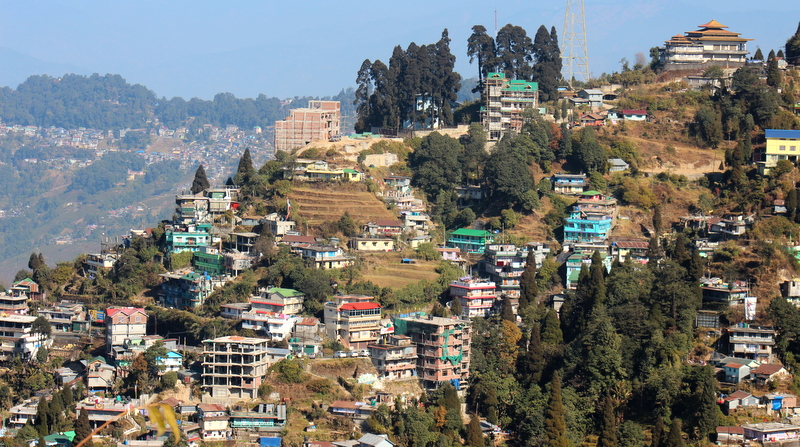
During the days of the Raj, or British Crown rule of the Indian subcontinent, Darjeeling became known as the Queen of the Hill Stations. It was a remote settlement of a few scattered villages when the British took over in the mid-1800s. By establishing a sanitorium, introducing the tea industry, building schools, and constructing a railway line, they created a thriving town that provided a refreshing escape from the heat of the plains, with a vibrant population of Europeans, Anglo-Indians, Tibetans, Nepalis, Sikkimese, Bhutanese, and Bengalis.
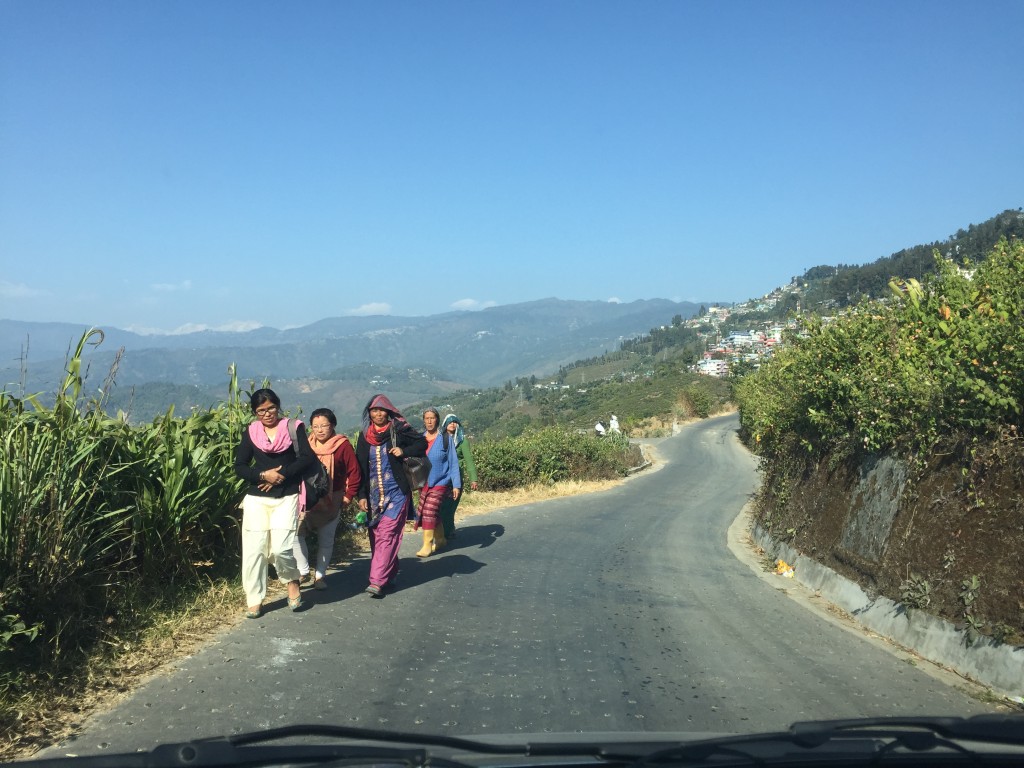

The first time I would have traveled the winding road from the plains up to Darjeeling, I was a little girl. On a winter afternoon over thirty years later, when I set off on the same road, the smell of the Himalayan air felt like no stranger. The same steep lanes wound between old villas and shops and, in the surrounding hills, orchids and rhododendrons still flourished. A day after Christmas it was, that we headed up the mountains, invisible in the winter mist at first, but proving its existence by popping our ears. The lower slopes of the foothills were polka-dotted with tea bushes, and little villages made up of multi-coloured houses clung to the edge of the steeply ascending road, decorated with poinsettia bushes, bougainvillea and pots of marigolds.



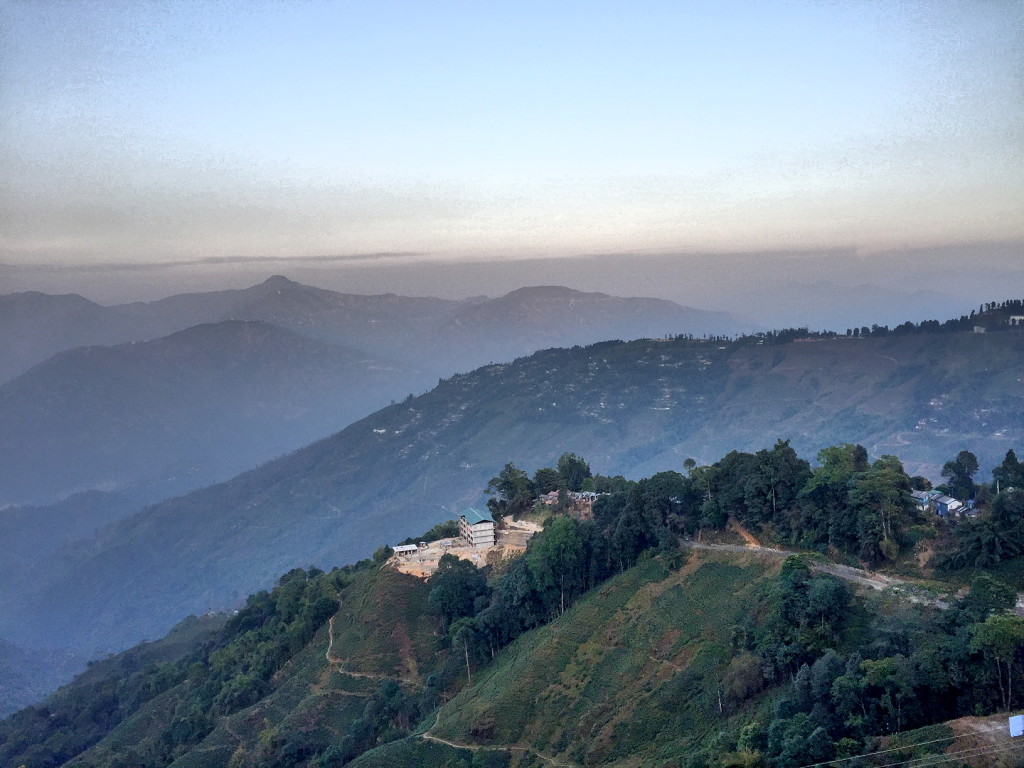
When in Darj, even if all you did was stare at the Kanchendzonga, all day, the experience is nothing less than a symphony. The name Kanchenjunga is derived from four words of Tibetan origin, usually rendered Kang-chen-dzo-nga or Yang-chhen-dzö-nga and interpreted in Sikkim as the “Five Treasuries of the Great Snow.”
In warm morning light, the rampant brush of the sun with its careless spread of emblazoned colours, kissed the tiered audience of low and erratic ridges standing out of a white carpet. And, you get lost in the white. In the afternoon, the whitening sun is so bright and round atop the peak, that you can almost feel its playing ‘tip-the-point’ game. Its an easy view, maybe just marred by occasional afternoon mists.
The sky is blue, and the snow ranges are stark white, dazzling in its pearly brilliance. If you happen to take a late afternoon stroll through the Chowrasta, it partly veiled view tempts you and makes you want to wait for the evening. When the sun is about to set, the mountains wear a glamorous look. Imagine how rich a place can be when it offers a ruby coloured sun, embellishments of topaz, amethyst and amber scattered in a labradorite sky, and jade, jaspers and peridots dotted against pearly white mountains! That’s a business-as-usual twilight sky up in this Himalayan town.
I wouldn’t mind if I just did this ‘business’ for a few days. And hence, I didn’t want to make too many plans. The dumplings had excitement beyond visible measures because like ‘Dora-the Explorer’ they could wear their snow suits, snow caps and gloves! They did their own ‘me-time’ thing.. over the quintessential ‘cha-biskut’ and ‘adda’, often drawing figures on smoky glass panes made frosty with their own warm breath.
I was happy that I could get my red long-coat out of my wardrobe that I last wore in fall in Toronto. And the man was thrilled that his hip-flask was loaded. The first evening back in our hotels was magical. As the valley darkened with golden filigree, and the sky turned amethyst we sat facing our hotel windows and sipped ‘Rus-tea Nail’ (Our version of my favourite Rusty Nail that has Drambuie and Whisky, only served over tea, this time).
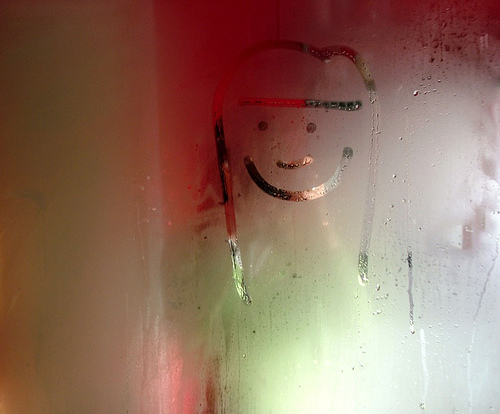

We did one tourism-centric thing during our trip which was taking the ropeway across Rangeet valley which we don’t regret. Stationed across a little hillock across the majestic North Point School, the two hour long wait to board the cable car, is definitely worth that investment. The ropeway takes about 20 minutes each side, and plummets down from the North Point to the Takvar Valley tea estate. As the trolley glides over the beautiful hill station, neatly sequenced tea gardens and quaint cottages, what you really get to see are beautiful vistas that make your eyes dreamy and hungry.
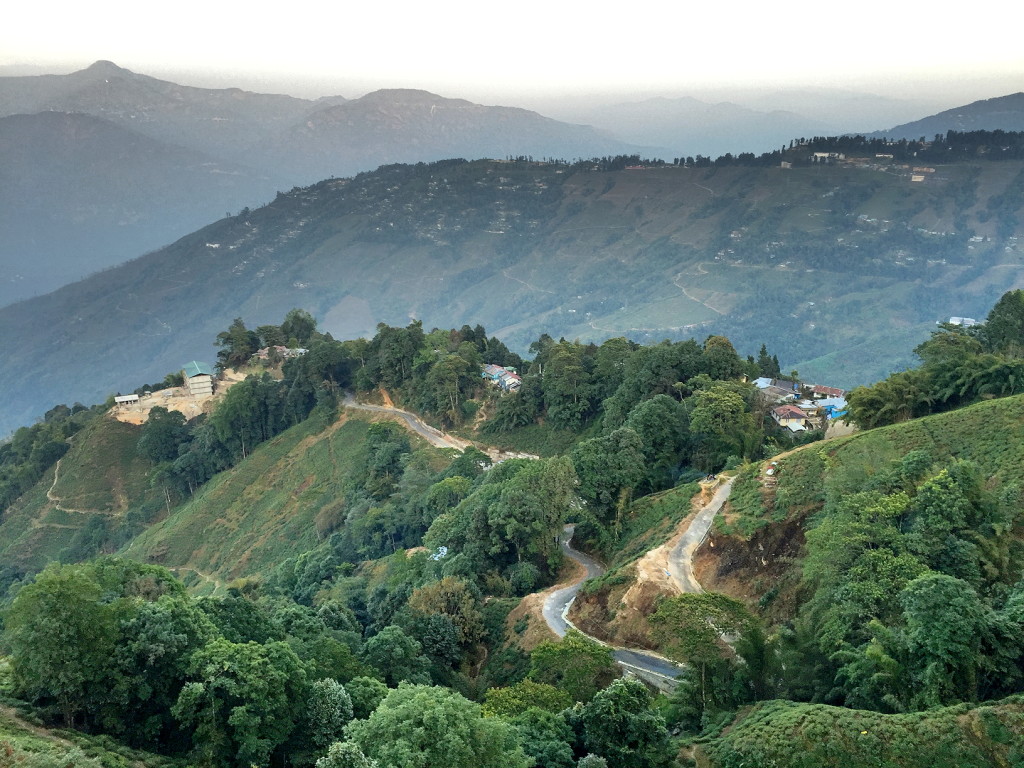
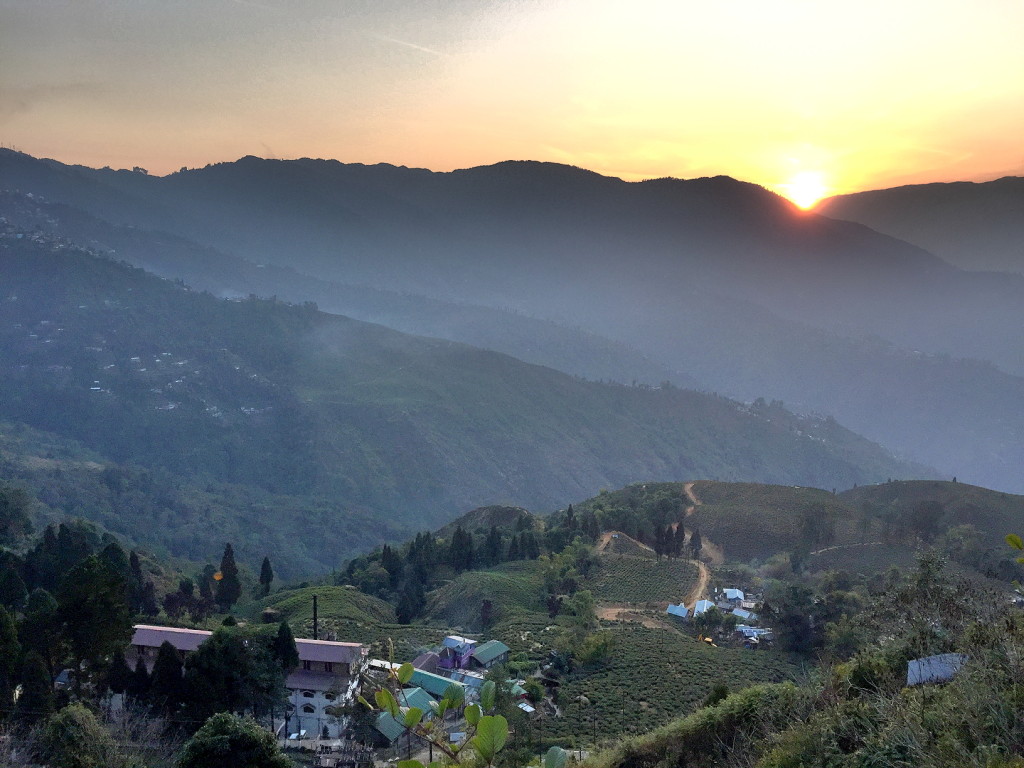
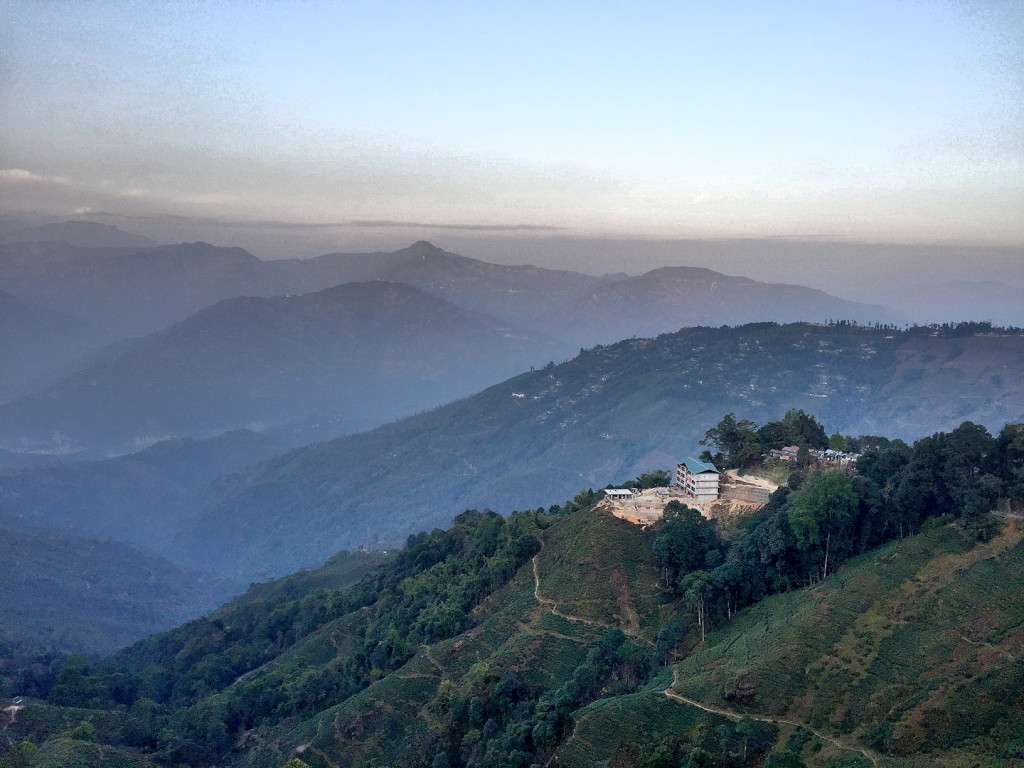

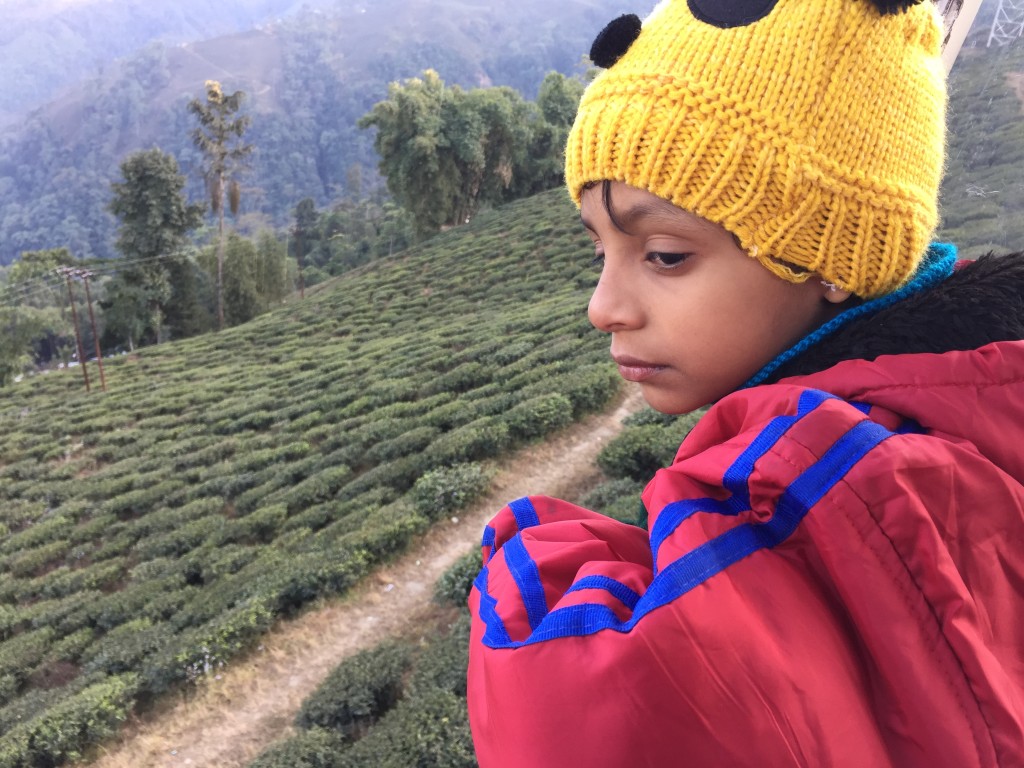



The next evening we took a pair of extremely well-behaved children to have dinner at the famed Windermere Hotel. Originally a cozy boarding house for bachelor English and Scottish tea planters during the 1800s, it is now a hotel remembered best by sophisticated travellers. It doesn’t fail to stir the romantic imagination one has of buildings of this nature! And, why not? ‘A room called Alice’ is a single room; ‘ Daisy’s Music room’ is a place for conversations, music and tea by the fireplace and the Bearpark’s Parlour is a lovely sitting area with a grand piano and a fireplace! Dining there was like dining with your extended family.
The day time’s lunch, I am sure would be warm and polite, but the evening transforms the dining room into a candlelit affair, with soft music floating around in the ether. White-gloved waiters with swallow like tail-coats glide in and around the tables serving delectable British and Indian fare and soft conversations flow..
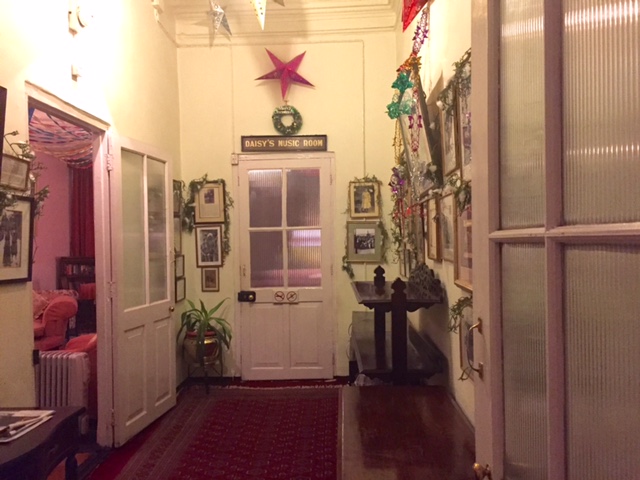
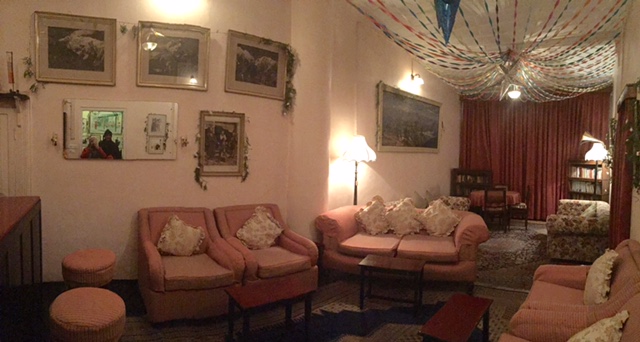
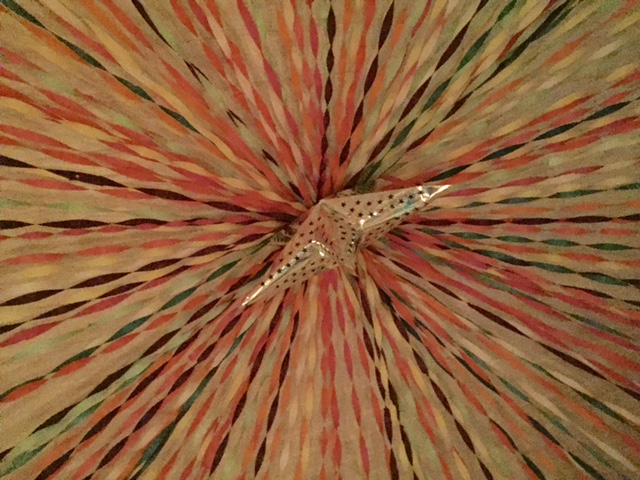
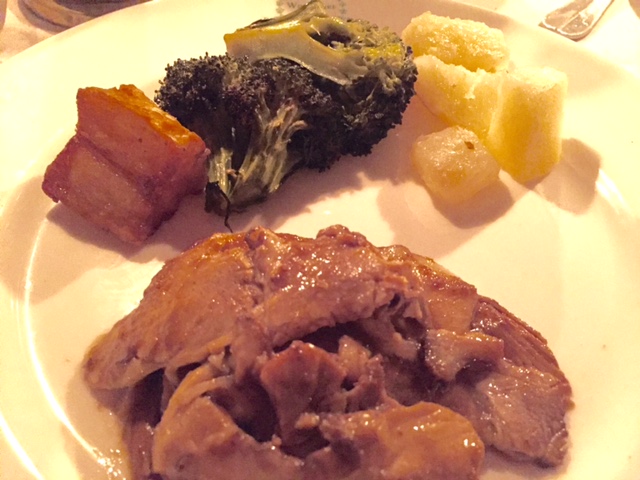
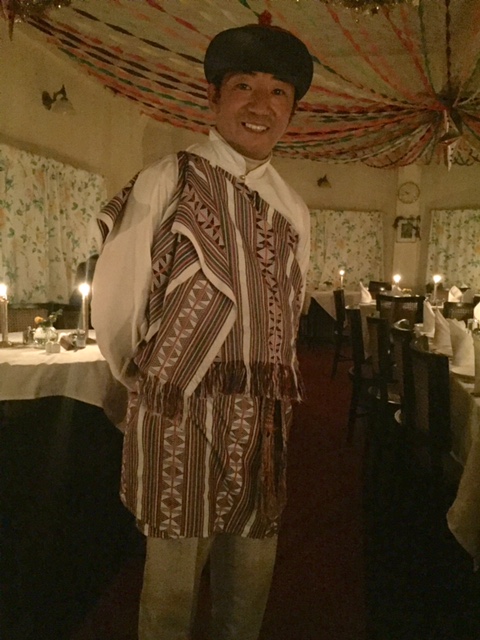
Each evening of the two days we would drive down from Darjeeling to Ghoom. By 5 it would be dark, and the winding path along the ridge would make us witness the splendid colours of twilight. The roads looked so pretty in comparison to their congested day avatar. Trains by night are far prettier than the day in my opinion.
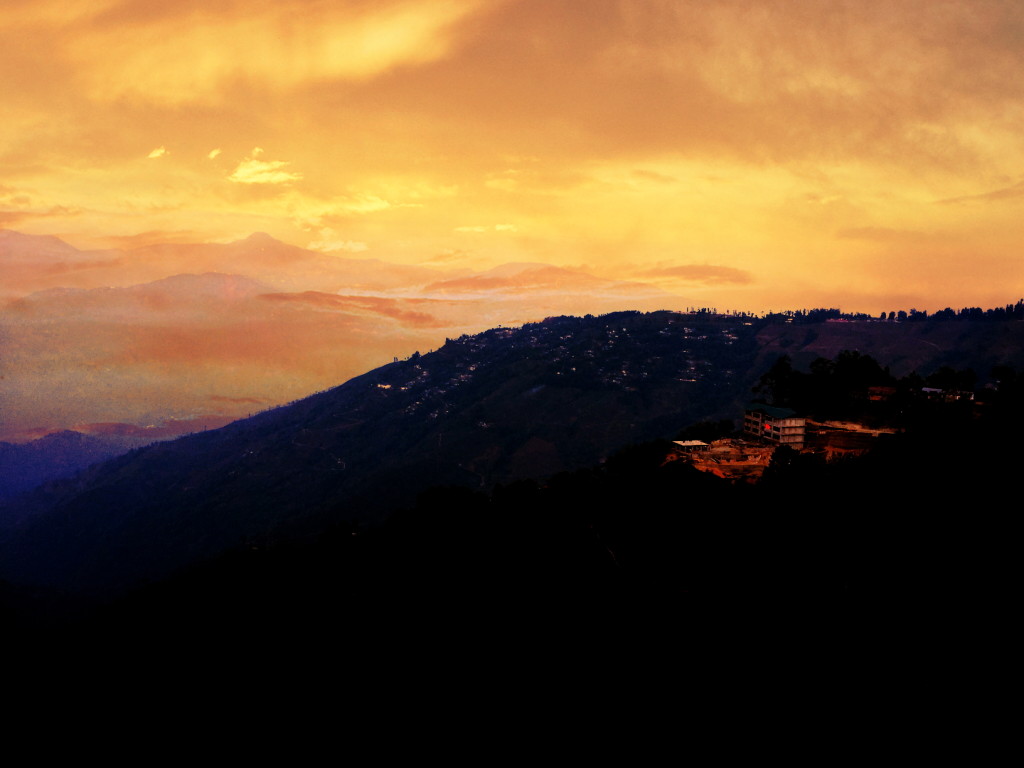
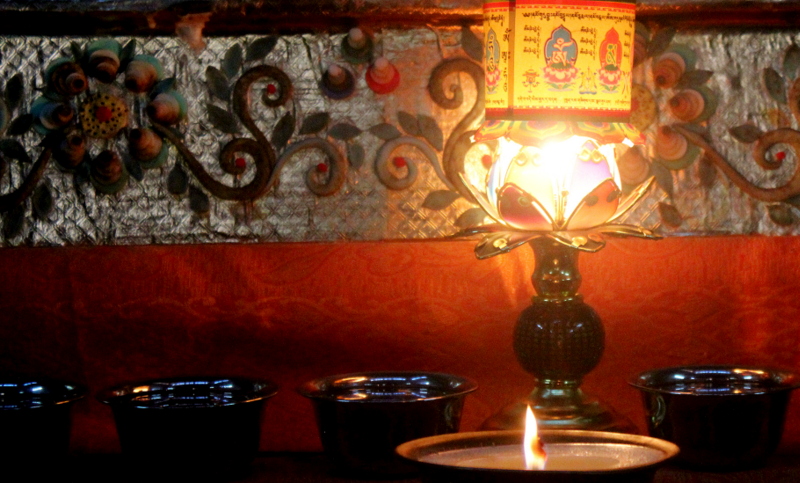

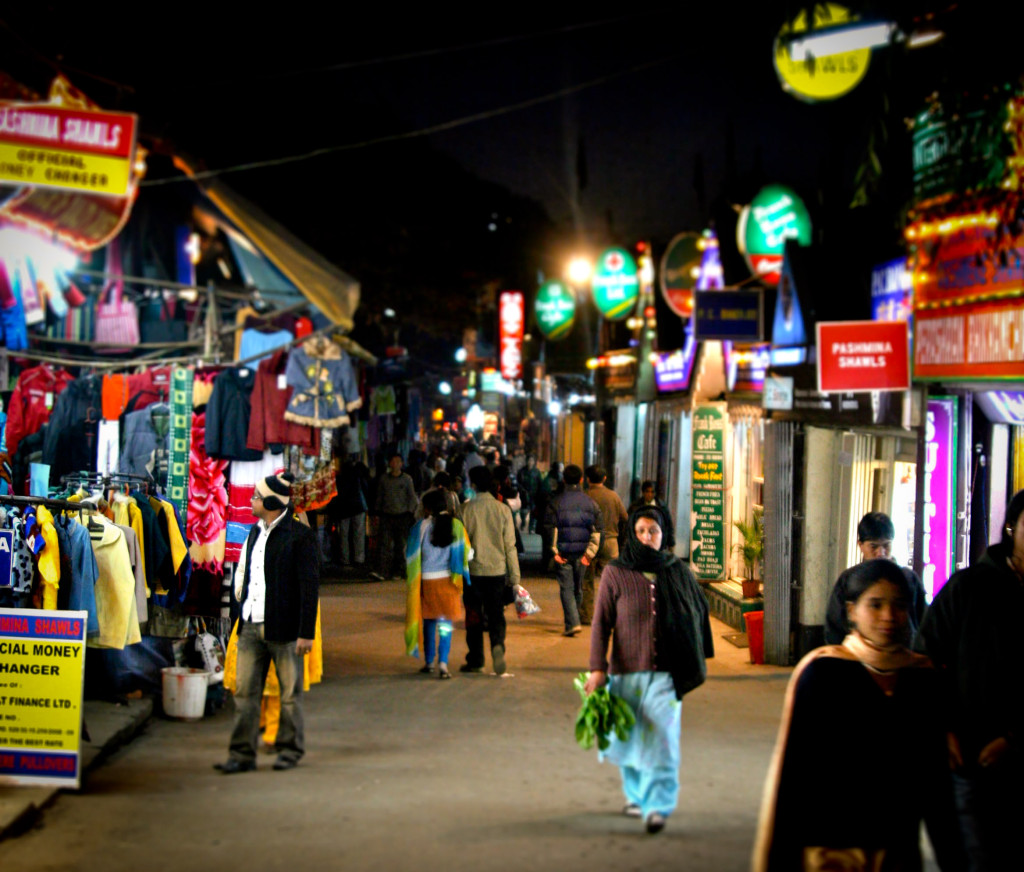
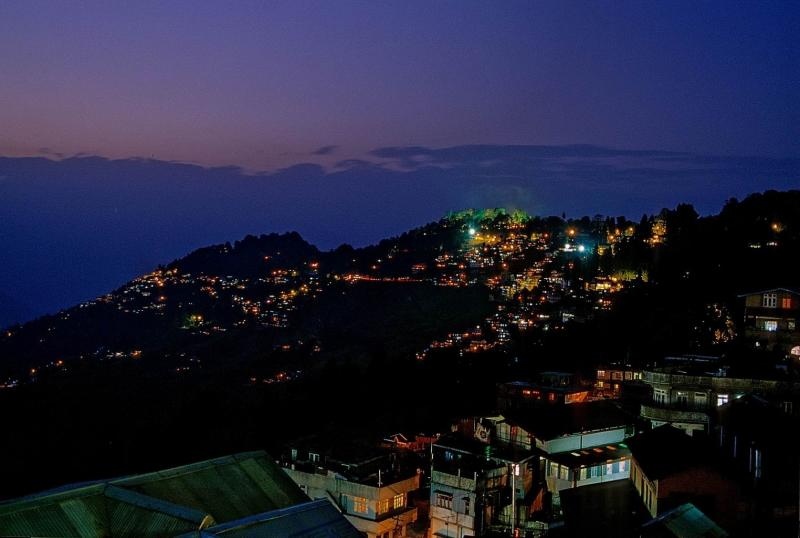
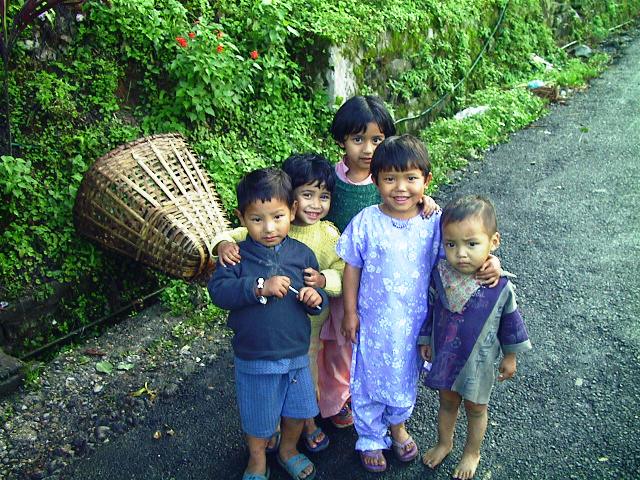
The mountains tell us their story and help us create ours. It’s been two weeks since I returned. But still my tryst with Darjeeling in the warm morning sun remains memorable. Little children with plump apple cheeks who frolic in the sweet winter sun; prayer flags that fly in the mountain breeze, and the iconic steam engine that chugs along the bustling roads in the hilly-town. It simply refuses to fade away in the midst of the hustle, bustle of city I call home today. And in the cacophony of this city, I can still hear the sound of the wind rustling through my ears as I stood on top of the mountain watching the clouds beneath me getting colored red by the setting sun.
I guess, the mountains will beckon again. Soon.

Sambrita Basu is a food-fascinated travel writer and photographer based out of Bangalore India. A background and a degree in hospitality and restaurant management paved her interest in food. As the secretary of the institution’s editorial club, she contributed regularly and wrote about food in their annual magazine, A la Carte.
Sambrita has published interviews of celebrity authors and business veterans in international publications like Infineon. Her contributions also include photographs on foods and restaurants of Bangalore for DNA—a leading newspaper publication in Bangalore. Sambrita’s creative expressions transport readers to alleys, hotels, hide-outs, restaurants, attics, and spice markets in several cities across the world.
Sam (as she is popularly known by her friends and family) doesn’t write for a living, but she lives to write.








